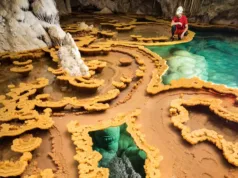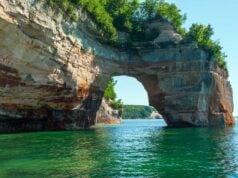The Mont Saint Michel is a stunning island commune located in Normandy, France, known for its iconic medieval abbey and impressive tidal variations. It is situated about 1 kilometer off the coast, and is connected to the mainland by a causeway which is covered by water at high tide. The island and its abbey have a rich history dating back to the 8th century, and have been a site of pilgrimage for centuries.
The abbey, which is the main attraction of the island, was founded in 966 and completed in the 13th century. It is a masterpiece of medieval architecture, and features a number of impressive elements including a Gothic-style cloister, a refectory, and a monumental stairway leading to the abbey church. The abbey church itself is an architectural wonder, with soaring vaulted ceilings and intricate stained glass windows.
Aside from the abbey, the island offers a wealth of charming streets and buildings, with many small shops, restaurants, and cafes. The island also offers stunning views of the surrounding coastline and the sea, particularly at sunset.
The Mont Saint Michel is a UNESCO World Heritage Site and attracts millions of visitors each year. It is one of the most iconic landmarks of France and a must-see destination for anyone visiting the country.

Brief history and significance of Mont Saint Michel
The Mont Saint Michel has a rich and fascinating history that dates back over a thousand years. According to legend, the island was named after Saint Michael the Archangel, who is said to have appeared to the Bishop of Avranches in 708 and instructed him to build a church on the island.
The first church was built in the 8th century, and the island became a popular pilgrimage site. Over the centuries, the church was expanded and transformed into an abbey, and the island itself was fortified to protect against attacks from the English and other invaders.
In the Middle Ages, the Mont Saint Michel was one of the most important pilgrimage sites in Europe, and thousands of people made the arduous journey to the island each year. The abbey became a center of learning, with monks studying and producing illuminated manuscripts, and the island became a hub of commerce and trade.
In the 19th century, the abbey was converted into a prison, and it remained so until the early 20th century. However, in the 1960s, the prison was closed, and the abbey was restored to its former glory. Today, the Mont Saint Michel is a major tourist attraction and a symbol of France’s rich history and cultural heritage.
In recognition of its historical and cultural significance, the Mont Saint Michel was designated a UNESCO World Heritage Site in 1979, and it attracts millions of visitors from around the world each year.
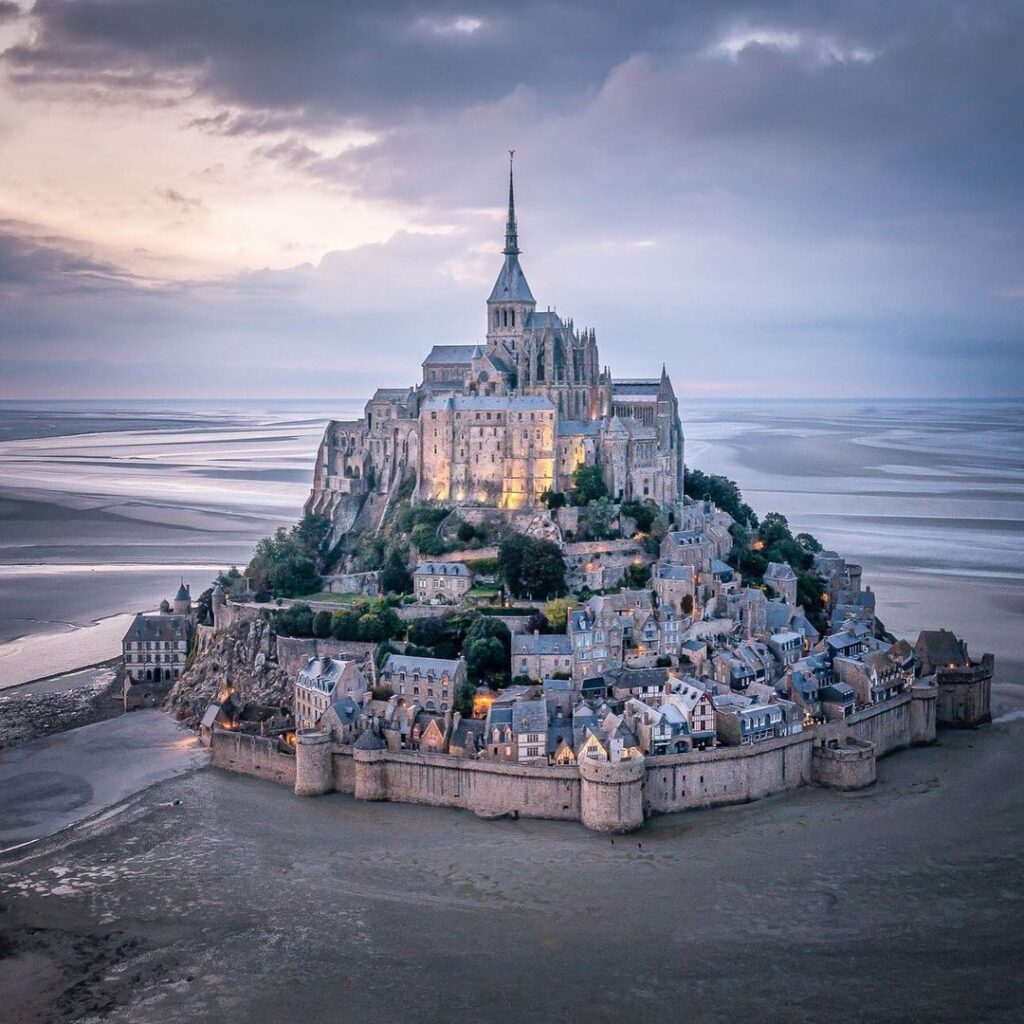
Geologic Formation
The Mont Saint Michel is located on a rocky island off the coast of Normandy, France, and is believed to have formed as a result of a complex interplay of geological processes over millions of years.
The island itself is composed of various types of sedimentary rock, including sandstone, limestone, and shale. These rocks were deposited over a period of millions of years, during which time the area was covered by shallow seas and subjected to the forces of erosion and weathering.
Over time, the action of the tides and the waves shaped the island’s distinctive conical shape, and the surrounding bay became one of the most complex and dynamic coastal environments in the world.
Today, the bay of Mont Saint Michel is known for its impressive tidal variations, which can reach up to 15 meters in height. This is due to the unique geography of the region, which causes the water to funnel into the bay and create a powerful tidal bore that sweeps across the surrounding flats.
The geological history of the Mont Saint Michel is a testament to the power and beauty of nature, and the island remains one of the most stunning and awe-inspiring natural wonders in the world.
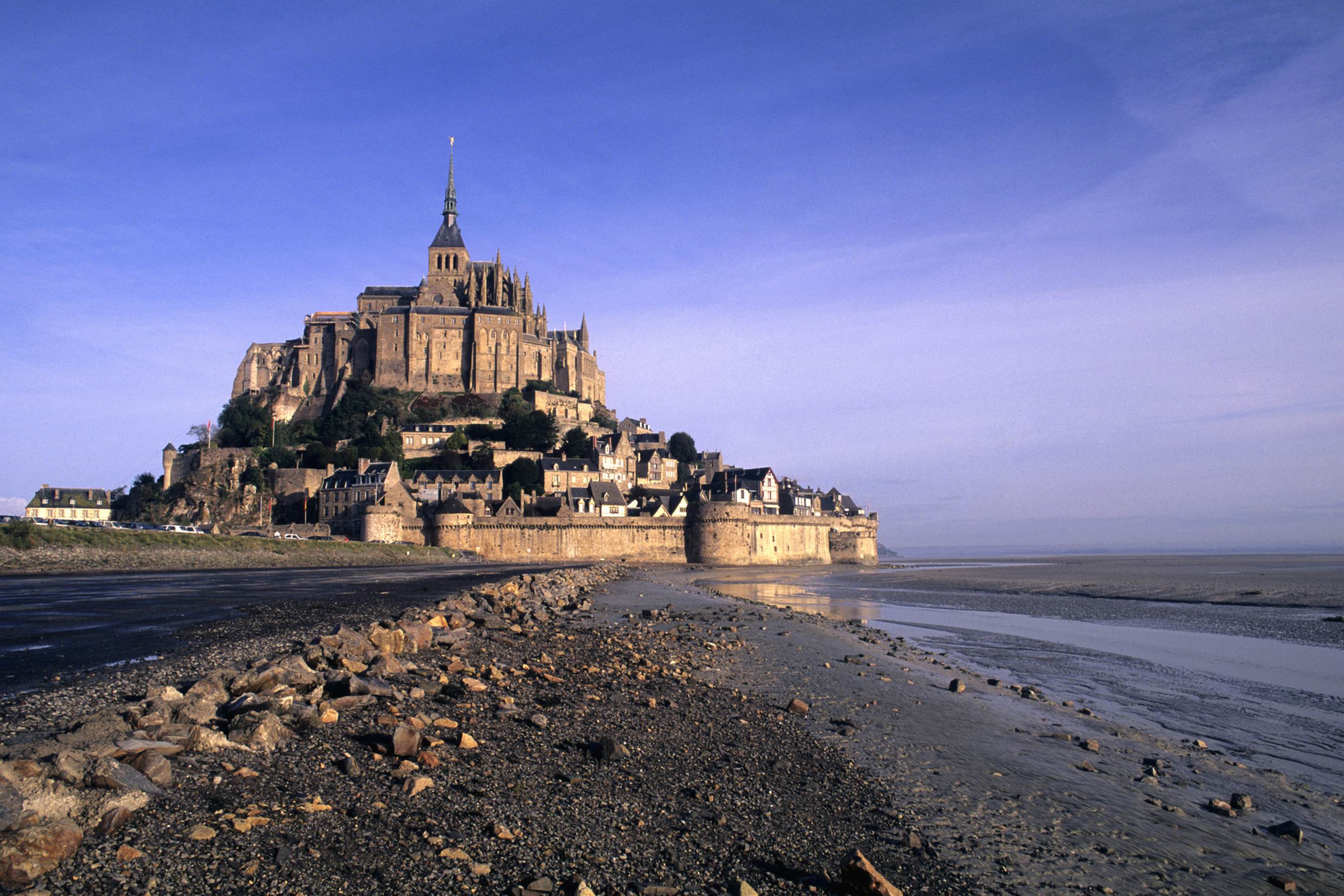
Rock Types
The Mont Saint Michel is composed of various types of sedimentary rock, which were formed over millions of years through a process of sedimentation, compaction, and lithification. These rocks are primarily composed of calcium carbonate, which was deposited on the sea floor by marine organisms such as corals, shells, and other microorganisms.
The most common rock types found on the Mont Saint Michel are sandstone, limestone, and shale. Sandstone is a coarse-grained sedimentary rock that is made up of sand-sized grains of mineral, rock, or organic material. It is a porous and permeable rock that is often used as a building material. Limestone, on the other hand, is a sedimentary rock that is composed primarily of calcium carbonate. It is often formed in shallow marine environments, where it can accumulate as coral reefs, shells, or other organic material. Limestone is a dense, hard rock that is often used as a decorative or building material.
Shale is a fine-grained sedimentary rock that is composed primarily of clay minerals. It is formed from the accumulation of mud and silt in quiet environments such as lakes, lagoons, or offshore basins. Shale is a soft and easily eroded rock that is often used as a source of oil or gas.
Overall, the sedimentary rocks that make up the Mont Saint Michel are a testament to the complex and dynamic geological processes that have shaped the region over millions of years.

Tidal Dynamics
The tidal dynamics of the Mont Saint Michel are among the most impressive and unique in the world. The island is located in a bay that is shaped like a funnel, with a narrow entrance that funnels the water into the bay and creates a powerful tidal bore that can reach up to 15 meters in height.
The tides in the bay are caused by the gravitational pull of the moon and the sun, which exert a force on the earth’s oceans and create a bulge of water that moves around the planet. As this bulge of water moves through the narrow entrance to the bay, it encounters the shallow waters of the bay and is forced to rise up, creating a powerful tidal wave that sweeps across the surrounding flats.
The tides in the bay are also influenced by other factors, including the topography of the region, the prevailing winds, and the local weather conditions. The bay is surrounded by a number of small islands and sandbars, which can create complex currents and eddies that add to the dynamic nature of the tidal system.
Despite its complexity, the tidal system of the Mont Saint Michel is a marvel of nature and a testament to the power of the natural world. It has also played an important role in the cultural and economic history of the region, providing a source of food and energy for local communities for centuries.
Human Impact
The Mont Saint Michel has been inhabited by humans for thousands of years, and its history is closely intertwined with the cultural and economic development of the surrounding region. As a result, the island and the surrounding bay have been shaped by a wide range of human impacts over the centuries.
One of the most significant impacts has been the construction of the abbey and other buildings on the island. The abbey was built in the 8th century and was expanded and modified over the centuries to accommodate the needs of the monks and the growing number of pilgrims who visited the site. The construction of the abbey and other buildings required the quarrying and transportation of large quantities of stone, which had a significant impact on the island’s natural environment.
In addition to the construction of buildings, the Mont Saint Michel has also been impacted by human activities such as fishing, farming, and tourism. Fishing has been an important activity in the region for centuries, and has had an impact on the local marine ecosystem. Farming has also played a role in shaping the landscape of the surrounding region, with the cultivation of crops and grazing of livestock altering the natural environment.
Tourism is one of the most significant human impacts on the Mont Saint Michel today. The island attracts millions of visitors from around the world each year, and this influx of people has put pressure on the island’s infrastructure and natural resources. The large number of visitors has also led to issues such as erosion, pollution, and overcrowding, which have had a negative impact on the island’s environment and ecology.
Despite these challenges, efforts are underway to mitigate the impact of human activities on the Mont Saint Michel. These include measures such as limiting the number of visitors to the island, improving waste management practices, and promoting sustainable tourism practices that minimize the impact on the island’s natural environment.
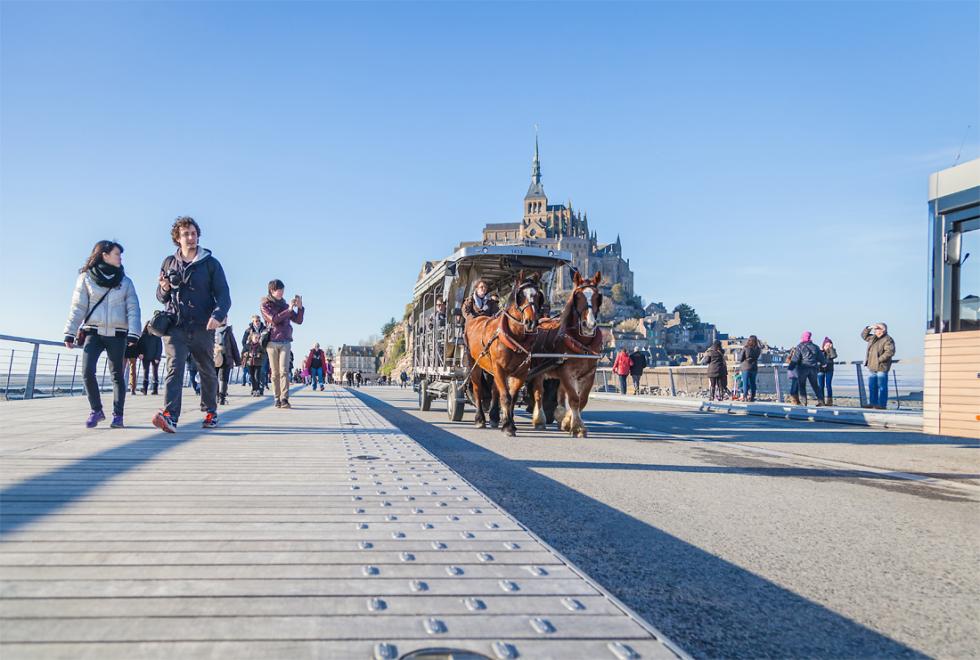
Recap of the island’s geological features and their significance
Mont Saint Michel is a tidal island located off the coast of Normandy in France. The island has a number of unique geological features that have contributed to its cultural and historical significance.
The island was formed by the erosion of soft rocks by the sea, which created a large tidal bay with a narrow entrance. This funnel-shaped bay causes a powerful tidal bore that can reach up to 15 meters in height.
The island is composed of various types of sedimentary rocks, including sandstone, limestone, and shale, which were formed over millions of years through a process of sedimentation, compaction, and lithification. These rocks are primarily composed of calcium carbonate, which was deposited on the sea floor by marine organisms such as corals, shells, and other microorganisms.
The tidal dynamics of the Mont Saint Michel are among the most impressive and unique in the world. The tides in the bay are caused by the gravitational pull of the moon and the sun, which exert a force on the earth’s oceans and create a bulge of water that moves around the planet. As this bulge of water moves through the narrow entrance to the bay, it encounters the shallow waters of the bay and is forced to rise up, creating a powerful tidal wave that sweeps across the surrounding flats.
The island and the surrounding bay have been shaped by a wide range of human impacts over the centuries, including the construction of the abbey and other buildings, fishing, farming, and tourism. Efforts are underway to mitigate the impact of human activities on the Mont Saint Michel, including measures such as limiting the number of visitors to the island, improving waste management practices, and promoting sustainable tourism practices that minimize the impact on the island’s natural environment.
The Mont Saint Michel FAQ
What is the Mont Saint Michel?
The Mont Saint Michel is a tidal island located off the coast of Normandy, France. It is known for its beautiful abbey and unique tidal dynamics.
What is the history of the Mont Saint Michel?
The Mont Saint Michel has a rich history dating back to prehistoric times. It has been a site of religious pilgrimage since the 8th century and was also used as a prison during the French Revolution.
How was the Mont Saint Michel built?
The Mont Saint Michel was built over several centuries, with the earliest structures dating back to the 8th century. The buildings were constructed using local stone quarried from the island itself.
How do you get to the Mont Saint Michel?
The Mont Saint Michel is accessible by car or bus, with parking available on the mainland. Visitors can also take a shuttle bus or walk across a causeway to reach the island.
What is the tidal bore at the Mont Saint Michel?
The tidal bore is a powerful wave caused by the funnel-shaped bay surrounding the Mont Saint Michel. It can reach up to 15 meters in height and is a popular attraction for visitors to the island.
What is the best time to visit the Mont Saint Michel?
The Mont Saint Michel is busiest during the summer months, but can be visited year-round. The best time to visit depends on your personal preferences and travel plans.
What is the Mont Saint Michel abbey?
The Mont Saint Michel abbey is a medieval monastery located on the island. It is known for its stunning Gothic architecture and historical significance.
Is the Mont Saint Michel a UNESCO World Heritage site?
Yes, the Mont Saint Michel was designated a UNESCO World Heritage site in 1979.


























